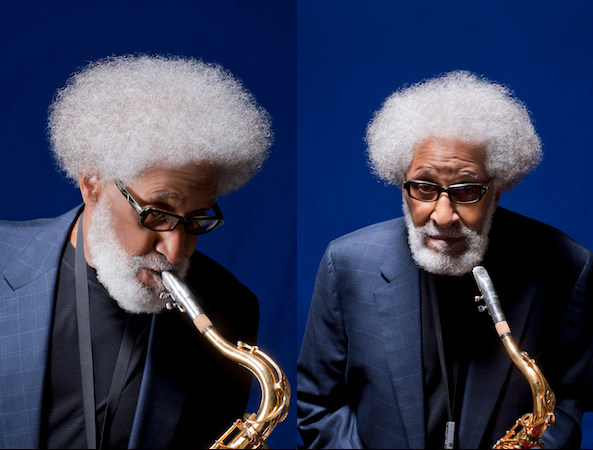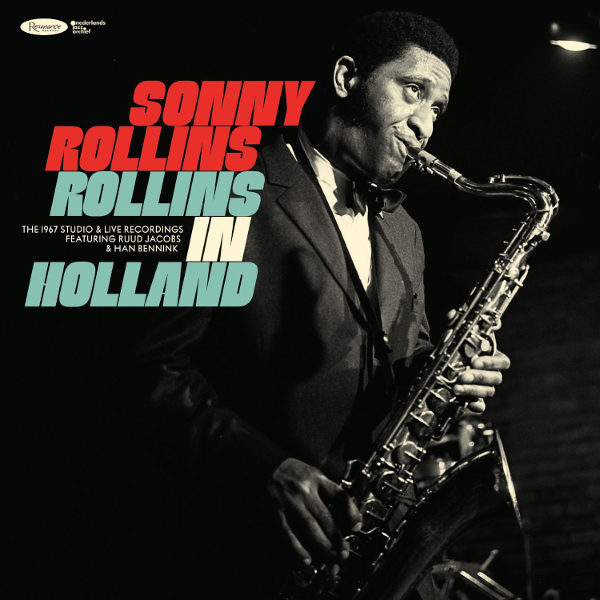
photography by John Abbott
Each December, the marketplace offers up some must-have jazz-related item. A newly-minted LP collection, a CD or DVD box, or doorstop book—something that pushes aside everything around it. In 2020, that was unquestionably Sonny Rollins in Holland (Resonance). The two-CD compilation of previously unissued live performances by the tenor saxophone giant is culled from a three-day period of May 1967 in Copenhagen. The 90-year-old Rollins retired from playing three years ago, so it comes as a reminder of just how miraculous his formidable talent truly was.
Rollins had been the preeminent contemporary tenorist in jazz, a virtuoso whose endless flow of ideas was matched by his rugged sound and fire-hose projection. He was a virtuoso who challenged his bands on every front. By the late 1950s, Rollins was recognized as the front-runner in a capable pack of saxophonists that included John Coltrane. Continually searching, through studies and practice, the critics of the day referred to Rollins by the title of one of his own compositions: Saxophone Colossus.
Then, to the jazz world’s complete surprise, he simply walked away. Though on the top of the heap in ’59, Rollins retreated. He played to the air for close three years beneath New York’s Williamsburg Bridge. His absence left a void in the marketplace that was quickly filled by Coltrane, who became the preeminent tenor saxophone voice in jazz until his death in 1967. Coltrane formed a stable band that allowed him to develop his ideas—and extend them–with like-minded contemporaries. When he reentered in 1962, the restless Rollins thrashed about with short-lived units that, while exciting, never left a doubt as to whose voice was front-and-center.

Rollins first visited Sweden in ’59, and he was judicious with live performances; no five-week tours for him. In May of ’67, he was in another wilderness period, this time playing a few dates as a feature with local players. He was also between recording contracts. That places Rollins in Holland between the formal recording sessions for East Broadway Rundown (Impulse, ’66) and Sonny Rollins’ Next Album (Milestone ’72).
From the opening unaccompanied cadenza on “Blue Room,” his sound cuts a wide path like a playground basketball phenom reaching for ever more sky. The faster the tempo, and the more instrumental interplay—especially with the rambunctious Bennink drums—the sharper the elbows on that sound. But then he’ll rhapsodize on a medium-up “Love Walked In” like the same baller, hanging in midair and deciding just how he’ll dunk the ball. Even on a ballad, Rollins somersaults, searching for the next idea as he does it. His ballads aren’t for romance, they’re just slower-moving trampolines.
Rollins had sparred with pianoless rhythm sections before, and he clearly thrived on the harmonic options the format allowed. According to the album’s annotation, he knew of his young collaborators, and designated them the best in Europe. Bennink is full of piss-and-vinegar, matching Rollins for ferocity, and reveling in the rough stuff. By contrast, Ruud’s under-miked contrabass is largely eclipsed, except for his harmonically precise solos.
Not every note is golden. Rollins momentarily ends up in a blind alley, and resorts to a short rhythmic phrase, which he repeats to the point of annoyance. But he plays with the phrasing, elongating it through circular breathing, turning it this way and that and, it’s not long before he’s off to the races again. It’s a minor stub in a torrential tour de force, but it’s a reminder that the Colossus was human after all.

Copenhagen…?